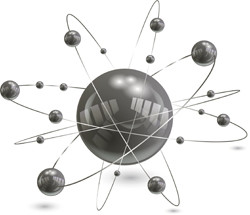From materials to devices
Integration of magnetic and non-magnetic materials into nanoelectronic devices enables use of the electrons' spin, as well as their charge, for carrying and storing information. This new paradigm in memory devices has been named spintronics. For this next-generation memory technology, EU-funded scientists are exploring new materials and associated interconnects. The interconnect element that the first part of the 'Tunable, highly spin-polarised materials for spintronics and non-volatile memories' (HIGHSPIN) project focused on was what scientists call non-local spin valve (NLSV). In the NLSV, current flows from the power supply to ground through ferromagnetic and the non-magnetic material underneath it. The current becomes spin-polarised with the majority of electrons' magnetic moment aligned with magnetisation of the ferromagnetic material. HIGHSPIN scientists fabricated NLSVs using a variety of channel materials to address the exponential drop in spin currents. Metals had an advantage due to their high conductivity that helps to reduce the conductivity mismatch prevalent in spin devices. Next, HIGHSPIN's focus turned to a particular aspect of domain walls in ferromagnetic nanowires – boundaries separating areas of a magnetised material that possess different magnetic alignments. Magnetic domain walls cannot only be moved by magnetic fields, but also by spin-polarised currents, offering an attractive alternative in designing magnetic non-volatile memories. Scientists have shown that highly pure 3D magnetic nanowires can be fabricated using focused electron beam-induced deposition. The nanowires can be grown with high aspect ratio (up to 100) and complex geometries as required in future spintronics memory devices. Lastly, their magnetic switching behaviour can be directly probed by the magneto-optical Kerr effect. Manipulation of such magnetic domain walls opens the way for an alternative technology that addresses the shortcomings of existing magnetic hard disks and solid-state solutions. The HIGHSPIN project has already made a significant step in this direction with the demonstration of magnetisation reversal in the nanowires as a result of domain walls' formation or propagation.







